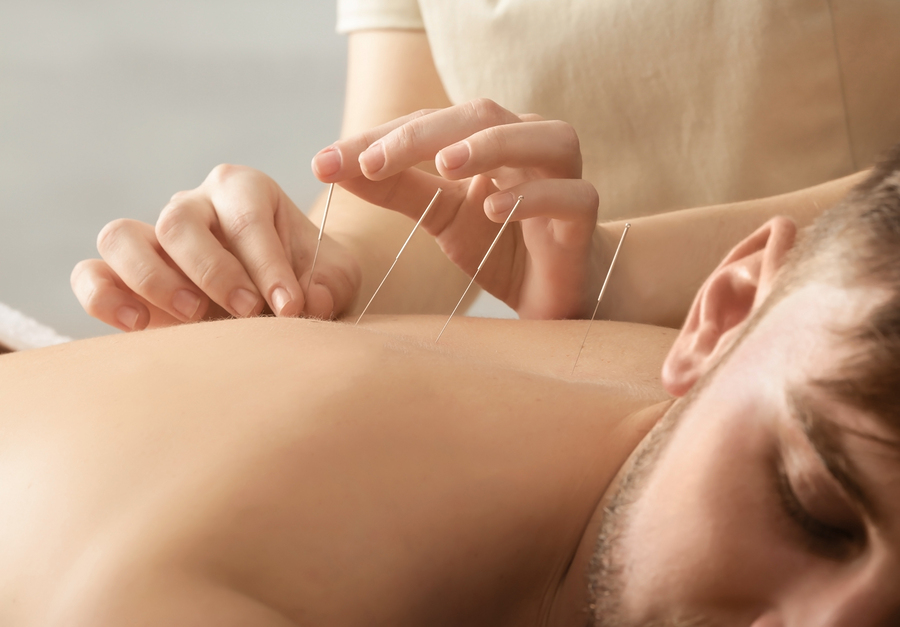According to the Diabetes Research Institute Foundation, an estimated 29 million Americans are living with diabetes. Diabetes affects 380 million people worldwide, and the World Health Organization (WHO) approximates that this number will double by the year 2030.
RELATED ARTICLE:
In modern-day China, acupuncture is commonly practiced to treat diabetes. Newer studies are focusing on the biological mechanism of diabetes and suggest acupuncture can be an effective treatment for diabetes symptoms.
Contents of this article:
Fast facts on acupuncture and diabetes:
- Acupuncture is a treatment that has been practiced in traditional Chinese medicine for 2,500 years.
- Acupuncture involves stimulating points of the body with thin needles.
- Diabetes is a disease where the body cannot process food to use as energy.
- The result of diabetes is a buildup of sugar in the blood.
- Most studies find some validation in the use of acupuncture to treat diabetes, but some suggest further research is necessary.
What is diabetes?
When people have diabetes, it means that their body is either not making enough insulin or is not using insulin as it should. This means the body cannot process sugar, the food it needs for energy, correctly.
There is more than one type of diabetes, but the most common types are type 1 and type 2.
Both types of diabetes can cause serious complications if not treated successfully. Complications may include:
- blindness
- kidney failure
- heart disease
- stroke
- foot or leg amputations
- neuropathy (nerve pain due to nerve damage)
- death
According to the Centers for Disease Control and Prevention (CDC), diabetes is the seventh leading cause of death in the United States.
What is acupuncture?
The use of acupuncture has increased in the U.S. and other Western countries over the past few decades. One large survey on complementary health found that around 3.14 million Americans tried acupuncture in 2007. Moreover, the survey found the number of visits to acupuncturists tripled from 1997 to 2007.
Most people think the needles used in acupuncture hurt. But acupuncture treatments are relatively pain-free and are often used to reduce chronic pain throughout the body naturally without unwanted side effects.
What do the studies say?
One study on rats from researchers in Beijing, China, examined how specific acupuncture points help improve symptoms of diabetes. They found that within 3 weeks, rat models showed lower glucose levels, increased insulin levels, and improved glucose intolerance.
RELATED ARTICLE:
One 2016 literature review in the journal, Acupuncture in Medicine reviewed relevant articles from 2008 to 2015 to determine whether acupuncture was a valid treatment for insulin resistance and to assess the possibility of acupuncture as a future treatment for insulin sensitivity.
The results of the literature review suggested low intensity and low-frequency electroacupuncture could help in reducing insulin resistance and increasing insulin sensitivity. Electroacupuncture could be used alone or in combination with other treatments, including alternative therapies, such as diet and Chinese herbs.
In 2015, Acupuncture in Medicine reviewed a group of studies where electroacupuncture was combined with an anti-diabetic medication, called metformin, to look for better glucose lowering responses and greater insulin sensitivity. The researchers found the electroacupuncture-metformin combination did offer better glucose lowering effects and greater insulin sensitivity than metformin alone.
None of the studies appear to touch on the processes and mechanisms that may explain how exactly acupuncture works to manage diabetes symptoms.
Acupuncture techniques for diabetes
Acupuncture techniques used to treat diabetes might be different than those for treating pain. There are many different styles and technique practices in medical acupuncture, but it appears only three of these have been researched for diabetes treatment.
Wrist-Ankle
Wrist-ankle treatment is a form of acupuncture that involves deep needle stimulation of the ankle and wrist nerves.
One 2006 Chinese study reported in the Journal of Traditional Chinese Medicine, found wrist-ankle acupuncture treatments to be helpful in treating diabetic peripheral neuritis (nerve damage resulting from diabetes).
The study’s researchers looked at three different treatment options for diabetic peripheral neuritis: wrist-ankle acupuncture, body-acupuncture, and traditional Western medical treatment and found that the wrist-ankle treatments were the most effective for managing nerve pain in diabetic patients.
Research reported in Evidence-Based Complementary and Alternative Medicine found that wrist-ankle acupuncture treatment is safe and it is also an effective procedure for treating pain, including diabetic peripheral neuritis.
Electroacupuncture
Electroacupuncture is the most common type of acupuncture used in diabetes treatment. Electroacupuncture involves inserting a pair of needles in each acupuncture point and passing an electrical impulse from one needle to the other. Numerous studies have found it effective in treating pain from diabetic neuropathy and for controlling blood glucose levels.
Herbal acupuncture
Herbal acupuncture involves a modern technique where herbs are injected into acupuncture points. According to one review from the journal Experimental and Therapeutic Medicine, herbal acupuncture may offer some benefits for maintaining blood glucose levels in people with type 2 diabetes.
What are the risks associated with acupuncture?
Anyone considering acupuncture should be aware of some general side effects. These include:
- soreness
- bleeding
- bruising
Before having acupuncture, a person should check:
- The needles are sterile and are used only once.
- The acupuncturist is licensed to practice. Many traditional Chinese medical doctors are also MDs in the U.S., practicing both approaches to health but always check their credentials.
- It is safe for them to have acupuncture treatments. Sometimes, a doctor may discourage a person who is taking blood thinners or has a blood clotting disease from having acupuncture
The takeaway
Acupuncture can be a safe and effective treatment as long as a licensed and experienced practitioner performs it. It has become far more accepted in western medicine over the past 20 years.
The WHO recognizes acupuncture as effective or a range of conditions. Moreover, it can be combined with other therapies traditionally used to treat diabetes, including medication, a healthy diet, and regular exercise.
*Article originally appeared at Healthy Holistic Living.












